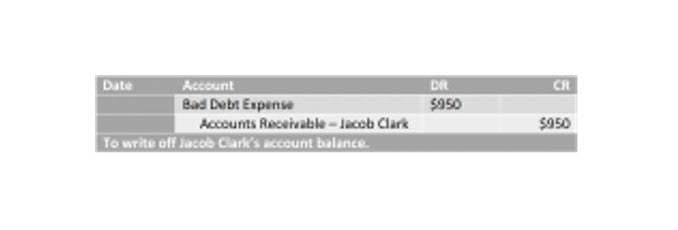
However, it is important to consider vertical analysis in conjunction with other financial analysis techniques and external factors for a comprehensive assessment of a company’s financial position. Using vertical analysis allows you to gain valuable insights into your company’s financial performance and make informed decisions to improve its financial standing. payroll This information is crucial for planning budgets, managing working capital, and making investment decisions. Vertical analysis is a financial analysis tool that provides insights into the relative size of components within financial statements.

Vertical Analysis Of Cash Flow Statement For Financial Planning
- Vertical analysis, as we’ve discussed earlier, is a powerful tool for understanding the relative composition of a company’s financial statements.
- This shows that the amount of cash at the end of 2024 is 141% of the amount it was at the end of 2020.
- For instance, if the operating cash flow ratio is consistently above 100% of net cash generated, it indicates strong cash generation relative to current liabilities.
- If the financial statements contain errors or are not prepared in accordance with accounting principles, the results of vertical analysis may be misleading.
- Understanding the difference between fixed and variable costs is essential for managing a business’s finances.
Use both vertical and horizontal analysis for a comprehensive view of cash flow trends. While vertical analysis shows composition, horizontal analysis reveals year-over-year changes in dollar amounts. Cash flow analysis is a financial analysis technique used to evaluate the inflow and outflow of cash within a business. It aims to determine the company’s ability to generate cash, meet its financial obligations, and fund its future growth. It can help identify potential cash flow problems, such as cash shortfalls or excessive spending, and enable business owners and investors to make informed decisions about the organisation’s financial management. This technique fosters informed decision-making and strategic planning, vital for sustained success in today’s competitive financial landscape.

Understanding Vertical Financial Statement Analysis
Regulatory frameworks, such as GAAP or IFRS, can also influence how certain expenses are reported, affecting comparability. Write each percentage result, enclosing negative amounts in parentheses, next to each respective dollar amount in the column to the right of the prior period’s dollar amounts. This shows the vertical and comparative analysis of the cash flow statements from the two periods. Calculate the sum of each of the cash inflows to determine the total cash inflows during the accounting period. For example, calculate the sum of $100,000 in total cash inflow from operating activities, $5,000 from the sale of investments and $15,000 from short-term borrowings. By mastering these detailed strategies and integrating data-driven insights, you can confidently analyze a cash flow statement and make informed, strategic financial decisions.

Forecasting Future Cash Flows
Showing the relative size of each financial statement item allows investors and analysts to assess the financial structure of companies. Vertical Analysis using the Balance Sheet is particularly useful in comparing companies of different sizes. According to a vertical analysis report by Deloitte India, 85% of large corporations employ vertical analysis in their financial reviews. On an income statement for a company with Rs. 100 crores total revenue, if cost of goods sold was Rs. 60 crores and operating expenses were Rs. 20 crores, the vertical analysis percentages would be. The vertical analysis method of analysis expresses each line item on a financial statement as a percentage of a chosen base figure from that statement.
- The individual line items (revenue, cost of goods sold, operating expenses etc.) are divided by total revenue.
- It also helps in evaluating the debt structure by comparing the percentage of liabilities to equity.
- On the income statement, seeing that cost of goods sold takes up 60% of total revenue while operating expenses takes up 20%, provides perspective on the expense structure needed to generate each rupee of revenue.
- To deepen your understanding of vertical analysis, let’s explore some practical examples that demonstrate its application in analyzing financial statements.
- Mastering cash flow analysis helps you make better investment decisions and strengthens business strategy by uncovering the true financial health of a company.
Key Takeaways
By grasping the purpose, importance, and various components of vertical analysis, you can harness its full potential in financial analysis and decision-making. To find the vertical analysis, you simply divide each line of the balance sheet by your base figure. This is in order to get a clear picture of whether your performance metrics are improving or declining. You can perform the same calculation for the other cash flow statement items for a more comprehensive view of the company’s cash flow. For this, the best tool to use is Wisesheets which allows you to get historical financials, key metrics, and growth metrics on your spreadsheet in one click. Example of the vertical analysis accounting of the financial statement, which shows the total amount and percentage.

Integrating Vertical Analysis into Business Strategy

This method simplifies comparison between companies of different sizes and helps identify trends or anomalies in financial structure. It’s especially useful for benchmarking or spotting changes in cost structure, asset allocation, or funding sources. By analyzing these ratios using vertical analysis, you can evaluate a company’s financial position, leverage, and liquidity. Accurate and reliable financial statements are essential for conducting effective vertical analysis. If the financial statements contain errors or are not prepared in accordance with accounting principles, the results of vertical analysis may be misleading. Therefore, it is crucial to ensure the integrity of the Grocery Store Accounting financial statements before performing vertical analysis.
Najnowsze komentarze